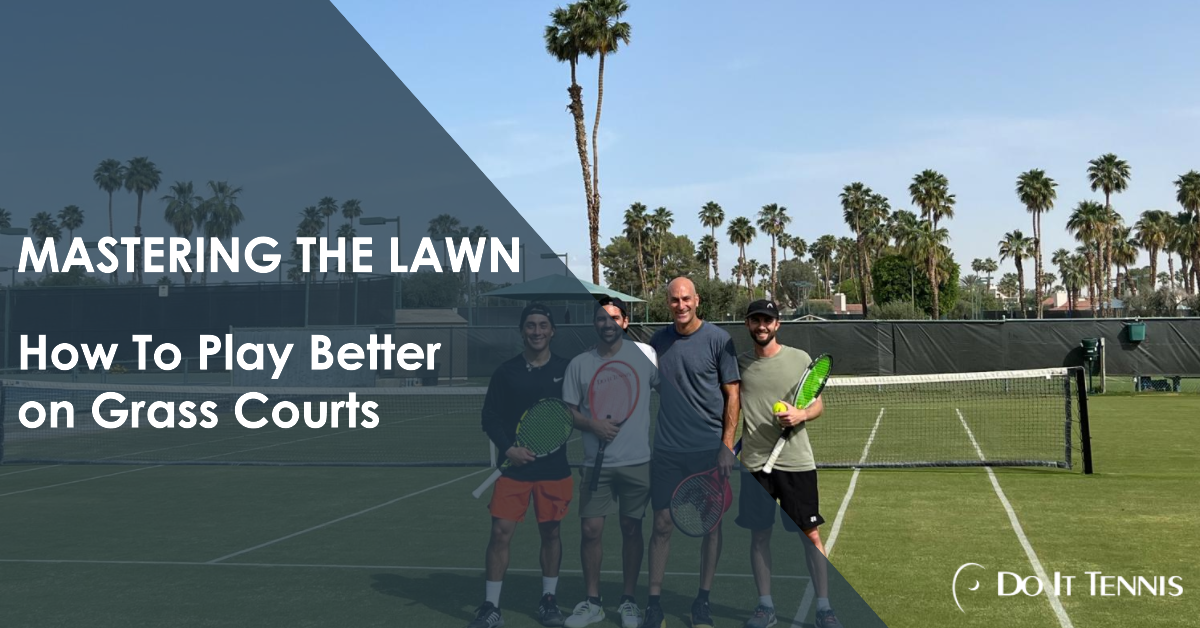Mastering the Lawn: How to Play Better Tennis on Grass Courts
June 18th, 2025 by Carlota

Graceful, unpredictable, and fast-paced—playing tennis on grass is a completely different experience than when you're hitting on hard or clay courts. If clay is a grind and hard court is a consistent bounce, then grass is the art of elegance under pressure. It’s the surface that rewards finesse, quick reactions, and tactical precision. Revered by legends and feared by baseline grinders, grass courts reward precision, agility, and bold strategy. So, here’s how to elevate your game on the green.
🌱 The Nature of Grass Courts
1. Speed & Bounce:
Grass is the fastest tennis surface. The ball stays low, skids off the ground, and rewards aggressive play. Unlike hard and clay courts, it doesn’t allow much time for long rallies or elaborate setups.
2. Slippery Footing:
The natural surface can be slick—especially when it's freshly watered or worn down—so confident, controlled movement is a must. Forget about sliding like you do on clay; quick, short adjustment steps rule here. Appropriate court shoes for grass are a must if you want to move with confidence and have some grip. As a second-best choice, clay court shoes can also be used and are better than using regular hardcourt shoes.
3. Strategy Shift:
Grass court tennis is chess with jetpacks. It rewards smart, bold decisions—serving big, volleying often, and keeping points short. Slice and drop shots are extremely effective on this surface.
🎾 Tactics That Win on Grass
Serve Big, Then Attack:
Powerful, well-placed serves followed by net approaches or aggressive groundstrokes are key. Even if you're not a serve-and-volley purist, adding it occasionally keeps opponents off balance.
Slice With Purpose:
The low bounce on grass makes slice shots incredibly effective. Use them to change pace, force your opponent to hit up, or lure them into uncomfortable positions.
Play Short Angles & Drop Shots:
These can be lethal on grass. Pull opponents forward with a drop shot, then pass them or lob over their heads.
Mix Up Serves:
Wide serves are especially deadly on this surface. They force your opponent off the court, giving you open space to attack their weak side.
Read the Court:
Watch for worn patches and uneven bounces. Knowing the court can help you adjust spin, placement, and depth more wisely than brute force ever will.
🏋️♀️ Strength & Conditioning for Grass Play
Grass challenges your balance, agility, and explosiveness. Here’s how to prep your body:
- Single-Leg Squats: Mimic lunges and off-balance play.
- Calf Raises: Reinforce ankle stability on slick turf.
- Lateral Band Walks: Strengthen hips and glutes for quick movement.
🧠 Footwork & Agility Drills
- Agility Ladder: For rapid feet and crisp directional changes.
- Short Sprints with Direction Shifts: Grass rallies are quick; train your body to change gears mid-point.
🧘♀️ Stay Flexible, Stay Ready
- Hip Flexor and Hamstring Stretches: Crucial for staying low and explosive.
- Quad and Ankle Mobility Drills: Keep your joints limber for injury prevention and better movement.
And don’t forget your mind! Mental adaptability is just as vital as physical fitness. With unpredictable bounces and quick points, your head needs to stay light and your reactions sharp. Accept that there will be odd bounces and try to use it to your advantage by not getting frustrated.
Grass court tennis is where tradition meets innovation—Federer-like finesse with a touch of controlled chaos. Embrace the speed, trust your instincts, and don’t be afraid to play boldly. The grass doesn’t forgive hesitation, but it rewards flair.
Have you ever played on grass before?


